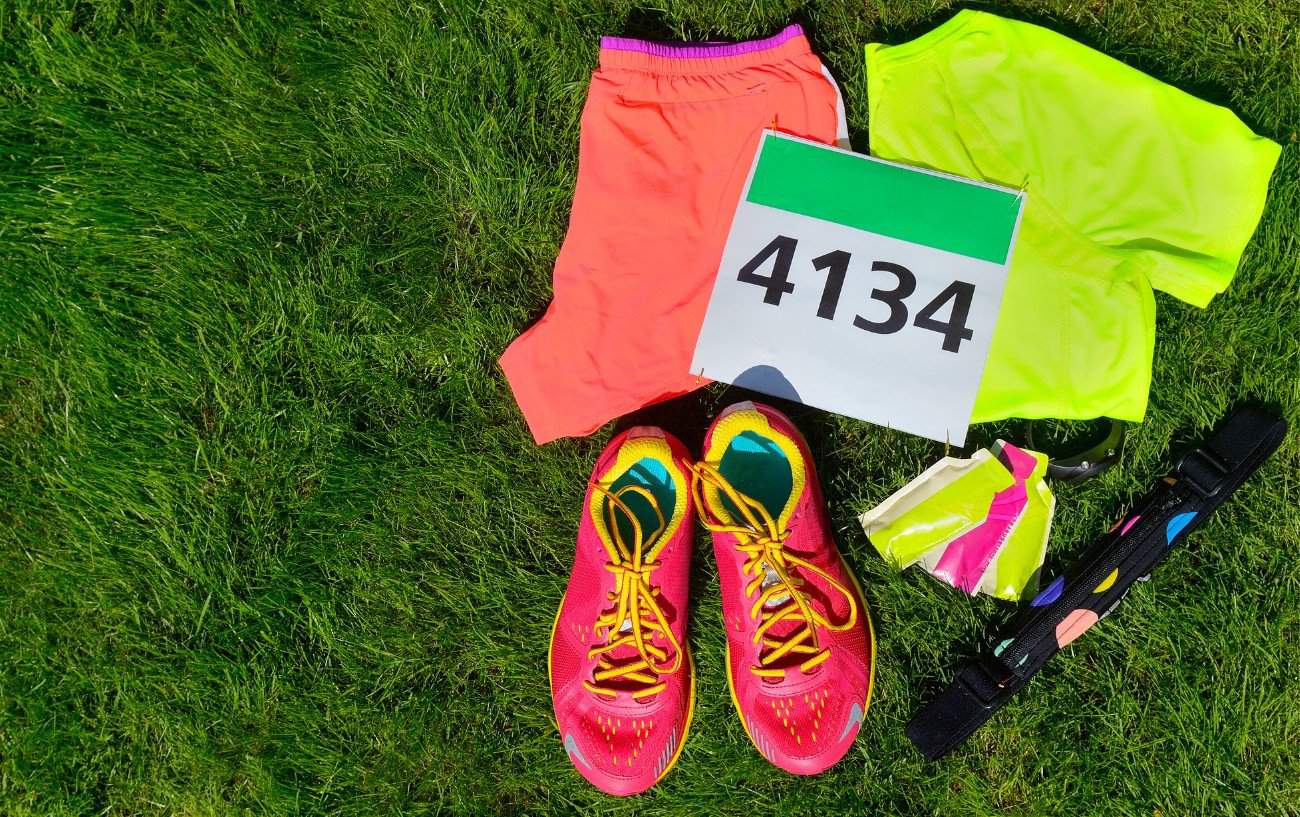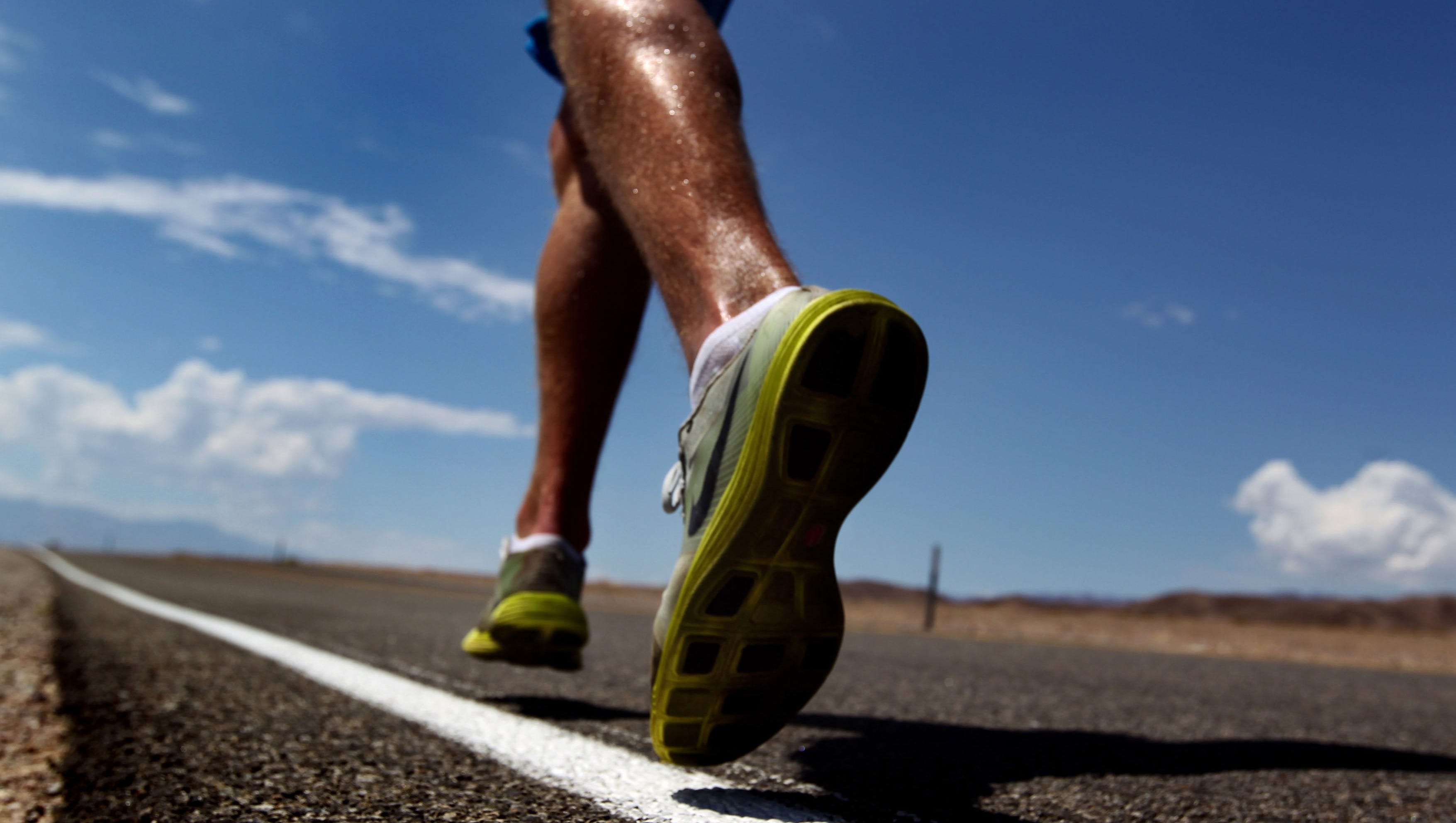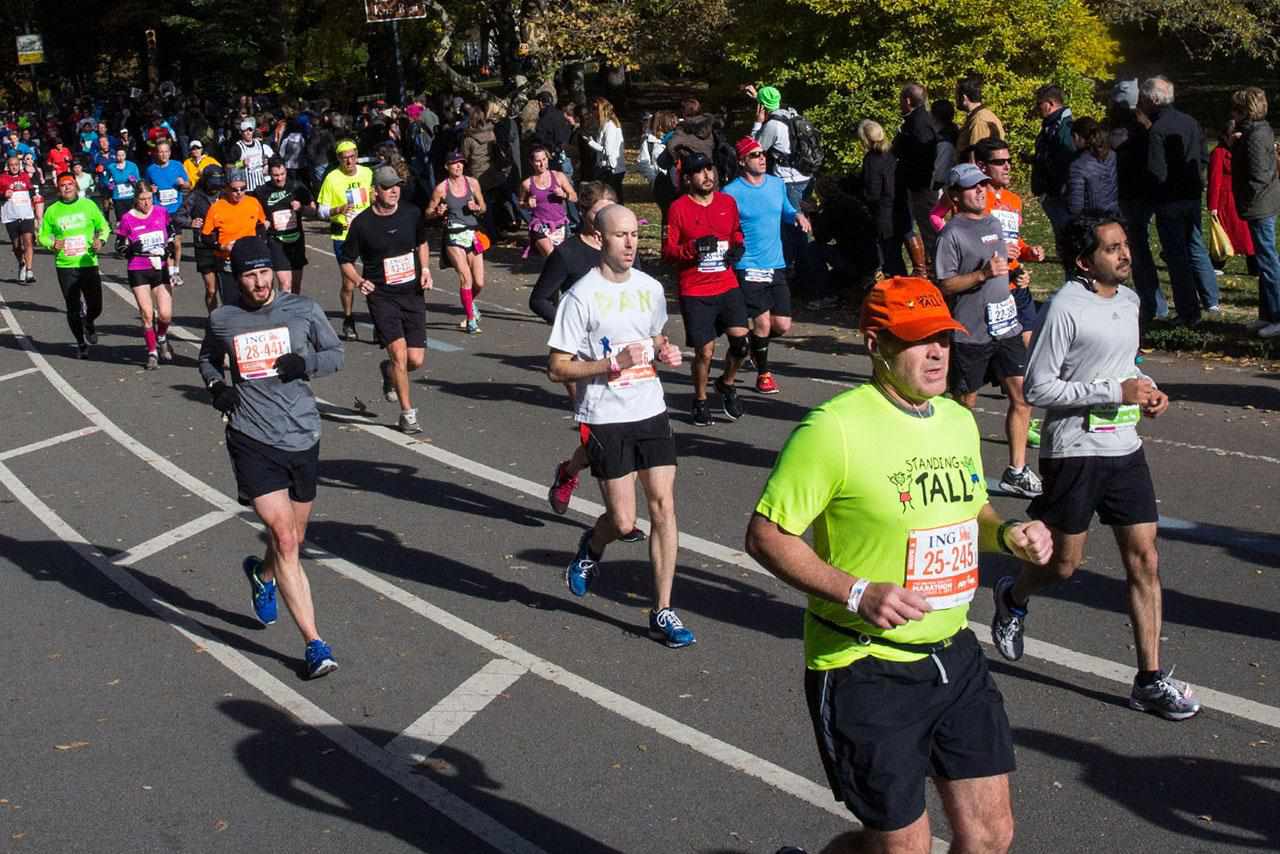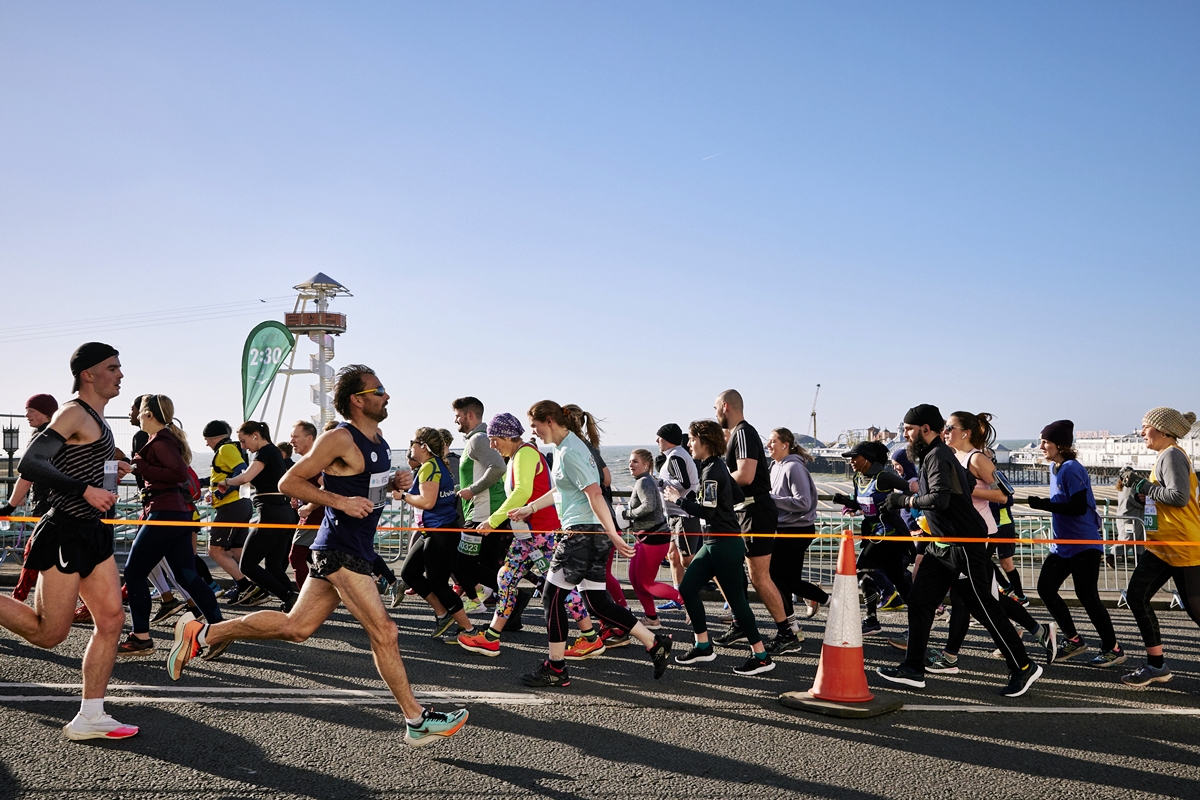Home>Misc>Featured>What To Do The Day Before A Half Marathon


Featured
What To Do The Day Before A Half Marathon
Modified: January 2, 2024
Discover key tips and strategies to prepare yourself for a successful half marathon on race day. Get featured advice on what to do the day before to maximize your performance and achieve your goals.
Introduction
So, you’ve been training for weeks, logging in those miles, and the day of the half marathon is finally here! Congratulations on reaching this milestone! As race day approaches, it’s essential to ensure that you are fully prepared for the challenge ahead. The day before the half marathon is a crucial time to focus on your physical and mental readiness.
While each runner may have their own pre-race routine, there are some key aspects that everyone should consider. From proper hydration and nutrition to rest and recovery, taking care of yourself in the day leading up to the race can significantly impact your performance. In this article, we will provide you with a comprehensive guide on what to do the day before a half marathon to help you optimize your race day experience.
First and foremost, it’s important to remember that every runner is different, and what works for one person may not work for another. It’s essential to listen to your body and make adjustments based on your personal preferences and needs. With that said, let’s dive into the various components of preparing for a half marathon on the day before.
Hydration
Proper hydration is crucial for optimal performance during a half marathon. In the day leading up to the race, it’s essential to focus on hydrating your body adequately. Drinking enough fluids will help ensure that your muscles are properly fueled and reduce the risk of dehydration.
Start your day by drinking a glass of water as soon as you wake up. Throughout the day, aim to consume an adequate amount of water to stay hydrated. A good general guideline is to drink at least 8-10 glasses of water spread evenly throughout the day.
In addition to water, you can also consume other hydrating fluids such as sports drinks or coconut water. These beverages contain electrolytes that can help replenish those lost through sweat and keep your body properly hydrated.
Avoid excessive consumption of caffeinated drinks as they can have a diuretic effect and increase your risk of dehydration. If you do have a cup of coffee, make sure to balance it out with additional water intake.
Remember that it’s not just about drinking liquids; consuming hydrating foods can also contribute to your overall hydration. Include fruits and vegetables with high water content, such as watermelon, oranges, cucumbers, and lettuce, in your meals and snacks throughout the day.
Monitor the color of your urine as an indicator of your hydration status. If it is pale yellow or clear, it is a good sign that you are adequately hydrated. If it is dark yellow or amber, it indicates dehydration, and you should increase your fluid intake.
By prioritizing hydration the day before your half marathon, you will help ensure that your body is prepared to perform at its best during the race. Remember to continue hydrating during the race itself, utilizing water stations along the course to replenish fluids lost through sweat.
Stay tuned for the next sections on nutrition, rest and recovery, gear check, stretching and warm-up, mental preparation, race strategy, logistics, and a final checklist to further enhance your half marathon experience!
Nutrition
Nutrition plays a vital role in fueling your body and providing the necessary energy for a successful half marathon. Properly fueling your body the day before the race is essential to optimize your performance and avoid potential issues during the race.
Focus on consuming a well-balanced diet that includes a combination of carbohydrates, proteins, and healthy fats. Carbohydrates should be the primary source of fuel as they provide the necessary glycogen stores for endurance activities. Incorporate complex carbohydrates such as whole grains, fruits, and vegetables into your meals.
It’s best to have your larger meal the evening before the race. Opt for a meal that includes a mix of carbohydrates and lean proteins. Some excellent choices include whole wheat pasta with grilled chicken and vegetables or brown rice with tofu and stir-fried veggies. Avoid heavy or spicy meals that can cause digestive discomfort.
Throughout the day, be sure to have small, frequent meals or snacks to keep your energy levels up. Snack on fruits, nuts, and yogurt, and consider energy bars or gels specifically designed for endurance athletes.
Stay properly hydrated by drinking water throughout the day and include hydrating beverages such as sports drinks or coconut water for added electrolytes.
It’s essential to avoid trying new foods or experimenting with your diet the day before the race. Stick to foods that you are familiar with and know will sit well in your stomach. Everyone’s digestive system is different, so make choices that work best for you.
If you prefer to have a light breakfast on race day, consider options like a banana, a small bowl of oatmeal, or a bagel with peanut butter. Find what works best for your body and provides you with sustained energy throughout the race.
Lastly, don’t forget to treat yourself to a pre-race dinner or snack that you enjoy. Indulge in a healthy, delicious meal to boost your spirits and get you in the right mindset for the race.
Remember that nutrition is not just important the day before the race but also during and after the race. Plan your fueling strategy for the race day itself, including hydration and consuming easily digestible carbohydrates and electrolytes during the race.
With proper nutrition, you’ll be providing your body with the fuel it needs to perform at its best during the half marathon.
Next, we’ll explore the importance of rest and recovery in the day before a half marathon.
Rest and Recovery
Rest and recovery are crucial components of any successful training program, and the day before a half marathon is no exception. After weeks of training, it’s important to give your body the rest it needs to perform at its best on race day.
Ensure you get a good night’s sleep the night before the race. Aim for 7-9 hours of quality sleep to allow your body to repair and recharge. Create a calming bedtime routine, such as taking a warm bath, reading a book, or practicing relaxation techniques, to help you unwind and promote a restful night’s sleep.
Avoid strenuous activities or intense cross-training workouts the day before the race. Instead, focus on light activities such as gentle stretching, taking a leisurely walk, or engaging in activities that help you relax and destress. This will help prevent unnecessary fatigue and soreness before the race.
Consider incorporating some active recovery exercises, such as yoga or low-impact stretching routines, to promote flexibility and release any tension or tightness in your muscles. These activities can also help clear your mind and enhance your overall sense of well-being.
If you have any lingering injuries or soreness, take the day before the race to address them. Apply ice, use foam rollers, or engage in other recovery techniques to alleviate any discomfort. However, be cautious not to overdo it and make any existing issues worse. Consult a healthcare professional if needed.
Mental rest is equally important as physical rest. Take some time to relax, mentally prepare, and visualize the race ahead. Engage in activities that bring you joy and help you relax, such as listening to music, practicing meditation, or spending quality time with loved ones.
Avoid any unnecessary stress or anxiety-inducing activities. Minimize distractions, limit exposure to negative news or conversations, and focus on maintaining a positive mindset. Positive affirmations and self-talk can be an effective way to boost your confidence and mental fortitude before the race.
Remember that rest and recovery are not limited to the day before the race. Continue to prioritize recovery throughout your training program, incorporating rest days, adequate sleep, and proper nutrition to allow your body to adapt and perform at its best.
We’re halfway through our guide! Next, we’ll cover the importance of conducting a gear check before race day.
Gear Check
Performing a thorough gear check the day before a half marathon is essential to ensure that you have all the necessary items and that they are in proper working condition. Having the right gear can greatly enhance your comfort and performance during the race.
Start by checking your running shoes. Make sure they are in good condition, with adequate cushioning and support. If they are worn out or nearing the end of their lifespan, it’s advisable to get a new pair before the race. Breaking in new shoes on race day is not recommended as it can lead to blisters or discomfort.
Check your running attire and ensure it is weather-appropriate. Consider the temperature and weather conditions expected on race day. Dress in layers if needed and choose moisture-wicking fabrics to help keep you dry and comfortable during the race. Don’t forget to wear a supportive sports bra and comfortable socks that won’t cause friction or blisters.
Inspect any additional gear you plan to use during the race, such as a running belt, hydration pack, or GPS watch. Ensure they are in proper working condition and adequately charged. Familiarize yourself with the functions and settings of your devices to avoid any issues or distractions during the race.
Bring along any race essentials you may need, such as fuel or nutrition gels, sunscreen, a hat or visor, and sunglasses. These items can greatly contribute to your comfort and protection during the half marathon.
If the race is taking place in an unfamiliar location, familiarize yourself with the course map and any specific rules or regulations regarding gear or equipment. Some races may have restrictions on the use of certain gadgets or headphones, so it’s important to be aware of any guidelines.
Consider packing a small bag or backpack with all your race day essentials to ensure that everything is organized and easily accessible. This can include your gear, fuel, race bib, ID, and any other necessary items. Lay out your race day outfit the night before to avoid any last-minute panic or forgotten items.
Lastly, don’t forget about safety. If you plan to run in low-light conditions, ensure you have reflective gear or a headlamp to make yourself visible to drivers or other runners. It’s also a good idea to have a form of identification, such as a race bib or ID, with you during the race.
By conducting a thorough gear check the day before the half marathon, you will be well-prepared and can focus on the race itself without any last-minute gear-related stress.
Next, we’ll dive into the importance of stretching and warm-up before the race.
Stretching and Warm-up
Stretching and warming up before a half marathon is essential to prepare your muscles, joints, and cardiovascular system for the upcoming race. Incorporating dynamic stretches and a proper warm-up routine will help improve your flexibility, prevent injuries, and optimize your performance.
Begin your warm-up with a short jog or brisk walk for 5-10 minutes to increase blood flow and elevate your heart rate. This will gradually raise your body temperature and prepare your muscles for the upcoming activity.
Next, move on to dynamic stretches that engage multiple muscle groups. Dynamic stretches involve gentle movements that mimic the actions you’ll perform during running. This type of stretching helps improve flexibility, range of motion, and muscle activation.
Examples of dynamic stretches include leg swings, walking lunges, high knees, and butt kicks. Perform each stretch for about 10-15 repetitions or for a distance of 20-25 meters.
Focus on stretching the major muscle groups used in running, such as your calves, quadriceps, hamstrings, hip flexors, and glutes. Pay attention to your individual needs, targeting areas that tend to be tight or prone to injury.
It’s important to note that static stretching, where you hold a stretch for an extended period, is not recommended as part of your warm-up routine. Save static stretches for after the race or during your post-run cooldown.
In addition to stretching, include some light exercises to activate your muscles. This could include exercises like squats, lunges, or leg swings to engage your lower body muscles and promote proper alignment and stability.
Finally, finish your warm-up with a few strides or short bursts of running at a faster pace. This will help effectively warm up your muscles and neuromuscular pathways, getting you ready for the race pace.
Remember to listen to your body during the warm-up. If something feels uncomfortable or painful, modify the stretch or exercise accordingly. It’s important to avoid any excessive or jerky movements that could cause injury.
By incorporating stretching and a proper warm-up routine, you’ll prepare your body for the demands of the race and reduce the risk of muscle strains, cramps, or other injuries.
Next, we’ll explore the vital aspect of mental preparation before a half marathon.
Mental Preparation
Mental preparation is a pivotal aspect of a successful half marathon. Your mindset and mental state can greatly influence your performance on race day. Taking the time to mentally prepare can help you stay focused, motivated, and resilient throughout the race.
One effective way to mentally prepare is through visualization. Imagine yourself crossing the finish line with a strong and confident stride. Envision the race course, visualizing each segment, the terrain, and any potential challenges you may encounter. Visualize yourself overcoming these obstacles and maintaining a steady pace.
Mentally rehearsing the race in this way can help build confidence and reduce anxiety. By familiarizing yourself with the course and imagining success, you’ll be better equipped to handle any unexpected situations that may arise during the race.
Positive self-talk is another powerful tool for mental preparation. Replace any negative or doubtful thoughts with positive affirmations. Rather than focusing on potential limitations, remind yourself of your training, your capabilities, and your determination to succeed.
Affirmations such as “I am strong,” “I am prepared,” and “I can do this” can help boost your confidence and maintain a positive attitude. Repeat these affirmations during your training runs and especially on race day to reinforce a strong mental state.
Managing race day nerves is also crucial for mental preparation. It’s normal to feel anxious before a race, but allowing these nerves to overwhelm you can negatively affect your performance. Develop strategies to calm your mind, such as deep breathing exercises, mindfulness techniques, or listening to calming music.
Surround yourself with a supportive network. Share your race goals with friends, family, or fellow runners, and draw strength from their encouragement. Having a support system can provide motivation and reassurance during the race.
Finally, establish a race day mantra or phrase that resonates with you and helps you stay focused. This mantra could be something simple like “Keep pushing” or “One step at a time.” Repeat it to yourself when you face challenging moments during the race.
By engaging in mental preparation, you set yourself up for success. Cultivating a positive mindset, visualizing success, and managing race day nerves will contribute to a confident and determined performance on race day.
The next section will delve into the importance of developing a race strategy for the half marathon.
Race Strategy
Having a well-defined race strategy is crucial for a successful half marathon. A race strategy helps guide your pace, energy management, and overall approach to the race. It allows you to make calculated decisions and maximize your performance throughout the course.
Start by familiarizing yourself with the race course. Study the elevation profile, if available, and identify areas that may be more challenging. Plan how you will conserve energy on uphill sections and take advantage of downhill portions.
Set a realistic and achievable goal pace for the race based on your training and previous race performances. Aim to start the race at a slightly slower pace than your goal pace to allow your body to warm up and settle into the race rhythm.
Consider breaking the race into segments or milestones. Mentally divide the course into smaller parts and focus on reaching these checkpoints rather than thinking about the entire distance. This helps make the race more manageable and allows you to set mini-goals throughout.
Pace yourself throughout the race, but be mindful not to start too fast and burn out early. It’s better to maintain a consistent pace and gradually pick up the pace in the latter stages of the race if you have energy reserves.
Have a contingency plan in case unexpected challenges arise during the race. Whether it’s adjusting your pace due to inclement weather, dealing with discomfort, or encountering unforeseen obstacles, being mentally prepared to adapt your strategy will help you stay focused and resilient.
Stay mentally engaged during the race by focusing on your form, breathing rhythm, and positive self-talk. Stay present in the moment and avoid getting caught up in negative thoughts or distractions.
Take advantage of aid stations along the course to rehydrate and refuel. Have a plan in place for when and how you will consume fluids and nutrition during the race. This will ensure that you are maintaining energy levels and staying adequately hydrated.
In the final kilometers of the race, if you have sufficient energy reserves, try to pick up the pace and finish strong. Dig deep and tap into that mental strength you cultivated during your training.
Remember, your race strategy is unique to you and should align with your training, goals, and individual preferences. Practice your strategy during training runs to ensure it is effective and comfortable for you.
With a well-executed race strategy, you’ll be prepared to tackle the half marathon and achieve your desired performance level.
In the next section, we’ll discuss the logistical elements that are essential to consider before race day.
Logistics
Taking care of logistical considerations before race day is vital to ensure a smooth and stress-free experience. By attending to these details in advance, you can focus on giving your best performance during the half marathon.
First and foremost, make sure you know the race location and the logistics of getting there. Determine the best route to the race venue, taking into account traffic patterns, parking availability, and any road closures or detours. Consider carpooling or using public transportation if it’s a convenient option.
Check the race website or participant emails for important race day information such as start time, starting waves, and any specific instructions. Arrive early to allow time for parking, picking up your race bib, and using the restroom. It’s better to have extra time than to feel rushed and stressed before the race.
Review the race day weather forecast and plan your attire accordingly. Dress in layers so that you can adjust your clothing as needed. Don’t forget to pack an extra set of dry clothes and a towel for after the race, especially if you anticipate rain or excessive sweating.
Consider bringing a bag to store your personal belongings while you run. Many races offer a bag check area where you can leave your items securely. Make sure to label your bag clearly with your bib number to avoid confusion.
Plan your pre-race meals carefully, making sure to eat a light and easily digestible meal at least two to three hours before the start of the race. Avoid trying new foods that may cause digestive issues. Keep some snacks on hand for after the race to refuel and replenish your energy levels.
If you’re using any electronic devices such as GPS watches or headphones, ensure they are fully charged and ready to use. Test their functionality before race day to avoid any surprises or technical difficulties.
Lastly, have a post-race plan in mind. Communicate with friends or family about where to meet after the race and make sure they have access to a race tracking app or know your estimated finish time. Consider arranging transportation for the post-race period, as you may be tired and not in the best condition to drive.
By taking care of the logistics ahead of time, you can minimize stress and distractions on race day and fully focus on your performance and enjoyment of the half marathon.
Next, we’ll provide you with a final checklist of essential items to ensure you’re fully prepared for the race!
Final Checklist
As race day approaches, it’s important to have a final checklist to ensure you have everything you need and are fully prepared for the half marathon. Here’s a comprehensive list of essential items to double-check before heading to the starting line:
- Properly fitting running shoes with adequate cushioning and support
- Moisture-wicking running attire appropriate for the weather conditions
- Sports bra and comfortable socks that prevent friction and blisters
- Hydration pack, water bottle, or fuel belt if desired
- GPS watch or running app to track your pace and distance
- Headphones and music player, if permitted by race guidelines
- A race bib and safety pins, securely attached to your attire
- Timing chip or other timing device provided by the race organizers
- Sunscreen to protect your skin from UV rays
- Hat, visor, or sunglasses for added sun protection
- Energy gels, bars, or other nutrition for fuel during the race
- Identification and emergency contact information in case of any medical issues
- A small bag to store your personal belongings during the race
- A change of clothes, towel, and any necessary toiletries for after the race
- A foam roller or other recovery tools to aid in post-race muscle recovery
- Extra safety pins, just in case
- A positive mindset and a determination to give it your all!
Go through the checklist to ensure you have all the necessary items and that they are in proper working condition. Lay out your race day attire and pack your bag the night before to minimize any last-minute stress or forgotten items.
Remember, the key is to be prepared, but also flexible. Be ready to adapt to any unforeseen circumstances and trust in your training and preparations. Give yourself permission to enjoy the race and embrace the experience, knowing that you’ve put in the hard work to reach this point.
With this final checklist completed, you’re now fully equipped to tackle the half marathon with confidence and determination. Best of luck! Enjoy every step of the race and celebrate your accomplishment at the finish line!









